· Since at the xintercepts of f (x), the graph's speed goes from increasing to decreasing or vice versa, the xintercepts of f (x) and the xintercepts of the second derivative of f (x) are the same This is just a coincedence, though, and won't always happen You'll learn more about this when you reach concavity hereStep 1 Determine where f0(x) = 0 The rst derivative of f(x) = x3 3x2 x is f0(x) = 3x2 6x 1, and f0(x) = 0 ()3x2 6x 1 = 0 ()x = 6 p 62 4 3 1 2 3 = 6 p 24 6 = 3 p 6 3;When the graph has a stationary point ⇒ The graph of the derivative becomes a root 2 Differentiation – Worksheets Thanks to the SQA and authors for making the

The Chain Rule
F(x) graphs and their derivatives
F(x) graphs and their derivatives-So f0(x) = 0 ()x = (3 p 6)=3 ˇ1816 and x = (3 p 6)=3 ˇ15 Make a rst derivative chart, shown below, with a row for xvalues under the number line and rows for f0and f above the number line Mark the critical numbers (3 · Exercise gives graph f(x) Students to sketch the graph of the derivative f'(x) Original Promethean flipchart exercise included Click on Design Mode to reveal answers or to edit




A Function Y F X Has A Second Order Derivative F X 6 X 1
F ' ( x) = x3 2 ( x 2) 3 x2 ( x 2) 2 (Factor out x2 and ( x 2) ) = x2 ( x 2) 2 x 3 ( x 2) = x2 ( x 2) 5 x 6 = 0 for x =0 , x = 6/5 , and x =2 See the adjoining sign chart for the first derivative, f ' Now determine a sign chart for the second derivative, f ''Finding the derivatives of the main inverse trig functions (sine, cosine, tangent) is pretty much the same, but we'll work through them all here just for drill 1 Derivative of sin 1 (x) We're looking for d d x s i n − 1 ( x) If we let y = s i n − 1 ( x) then we can apply f (x) = sin (x) to both sides to get · This is a very simple matching activity for Calculus Students are give a set of cards with either a linear, quadratic or cubic function on them Their job is to pair them up so that one is a function and the other is its derivative There are a total of 12 functions with 12 derivatives The first six are all linear or quadratic graphs and the second six are either quadratic or cubic graphs (if
/09/16 · 1112 Derivative Graph In the below graph, two functions are pictured, f(x) and its derivative, but I can't seem to tell which is which According to those graphs, which is greater Solution You might have noticed that the red function has an even degree whereas the blue has an odd degree Why?The graph of r epresènts the equation of a polynomial function, the graph of" can be drawn by raising the by Original allel to dr atic Cub ic When the gradient offTX' is positixe, we draw the corresponding graph off(x) the Theref01Q, if the graph off'(a) is located the xaxis, the graph off(S) is drawn with a positixe gradient across that domainINTERPRETING GRAPHS OF f(x)
Examples Example 1 Find the derivative of f(x) = sinh (x 2) Solution to Example 1 Let u = x 2 and y = sinh u and use the chain rule to find the derivative of the given function f as follows f '(x) = (dy / du) (du / dx) ;Part 2 Graph Then find and graph it Graph of Graph ofFunction f above 2 On the other hand, it is the height of the graph of the derivative f0 above 2 This illustrates a general principle At any number a, slope of the graph of f at a = height of the graph of f0 at a Both of these quantities equal f0(a) (The phrase \slope of the graph of f at a" is short for \slope of the line tangent to the




Copyright C Cengage Learning All Rights Reserved Ppt Download
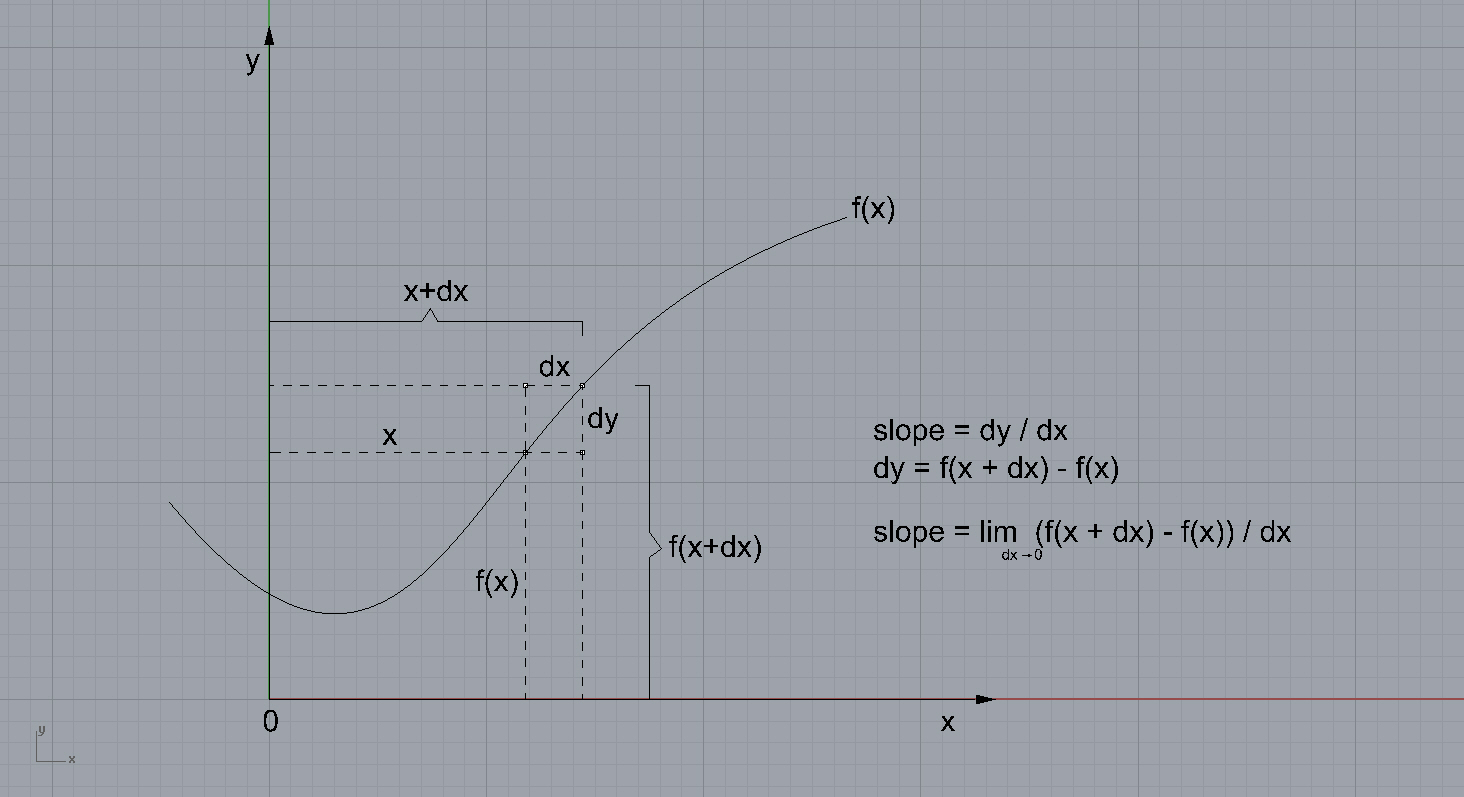



Designcoding Derivative And Slope
· This calculus video tutorial explains how to sketch the derivatives of the parent function using the graph f(x) This video contains plenty of examples andWe know how to graph functions, and we know how to take derivatives, so let's graph some derivatives!(1) the f(x) has a minimum at x=2 and the derivative has an xintercept at x=2 (2) the f(x) decreases on (∞,2) and the derivative has negative values on (∞,2) (3) the f(x) increases on (2,∞) and the derivative has positive values on (2,∞) (4) the f(x) changes from decrease to increase at the min while the derivative values change from
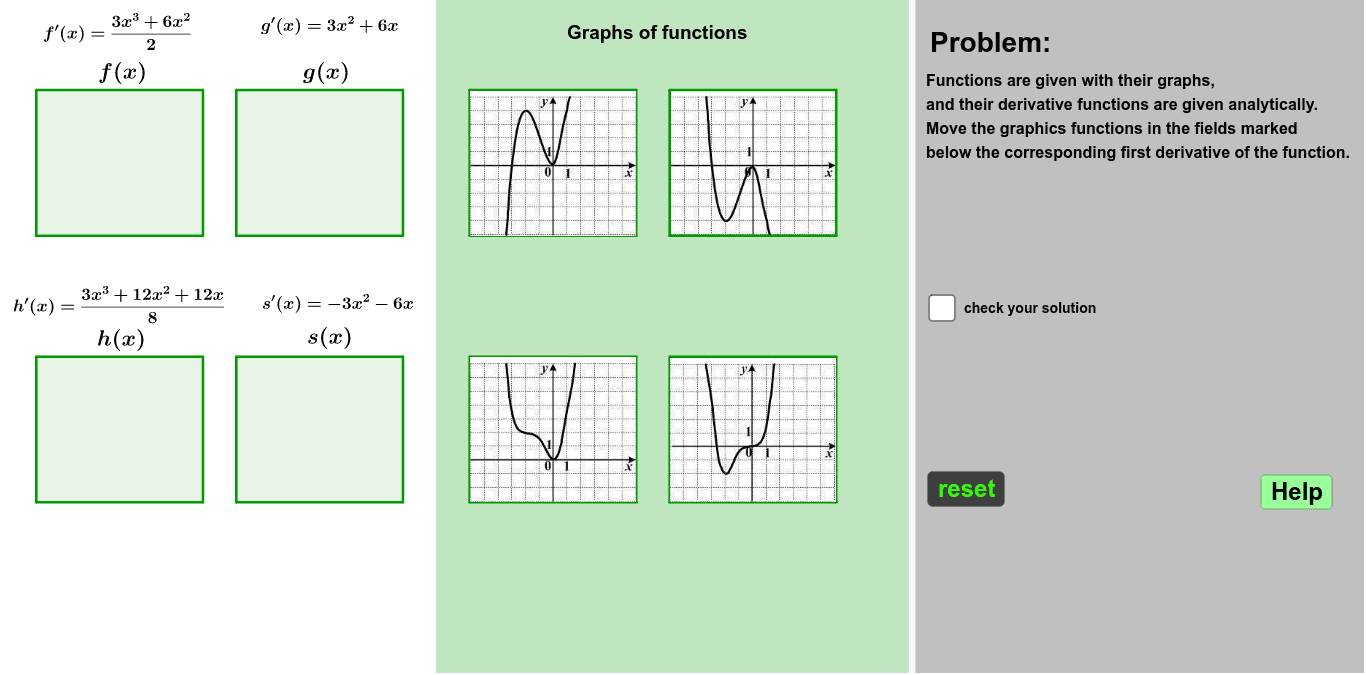



Puzzle Graphs Functions And Their First Derivatives Geogebra




The Derivative Function
· Figure c shows a function decreasing concavely from (a, f(a)) to (b, f(b)) At two points the derivative is taken and it is noted that at both f' < 0 In other words, f is decreasing Figure d shows a function decreasing convexly from (a, f(a)) to (b, f(b)) At two points the derivative is taken and it is noted that at both f' < 0Substitute u = x 2 in f '(x) to obtain f '(x) = 2 x cosh (x 2)For an example of finding and using the second derivative of a function, take f(x) = 3x3 ¡ 6x2 2x ¡ 1 as above Then f0(x) = 9x2 ¡ 12x 2, and f00(x) = 18x ¡ 12 So at x = 0, the second derivative of f(x) is ¡12, so we know that the graph of f(x) is concave down at x = 0 Likewise, at x = 1, the second derivative of f(x) is f00(1) = 18 ¢1¡12 = 18¡12 = 6;
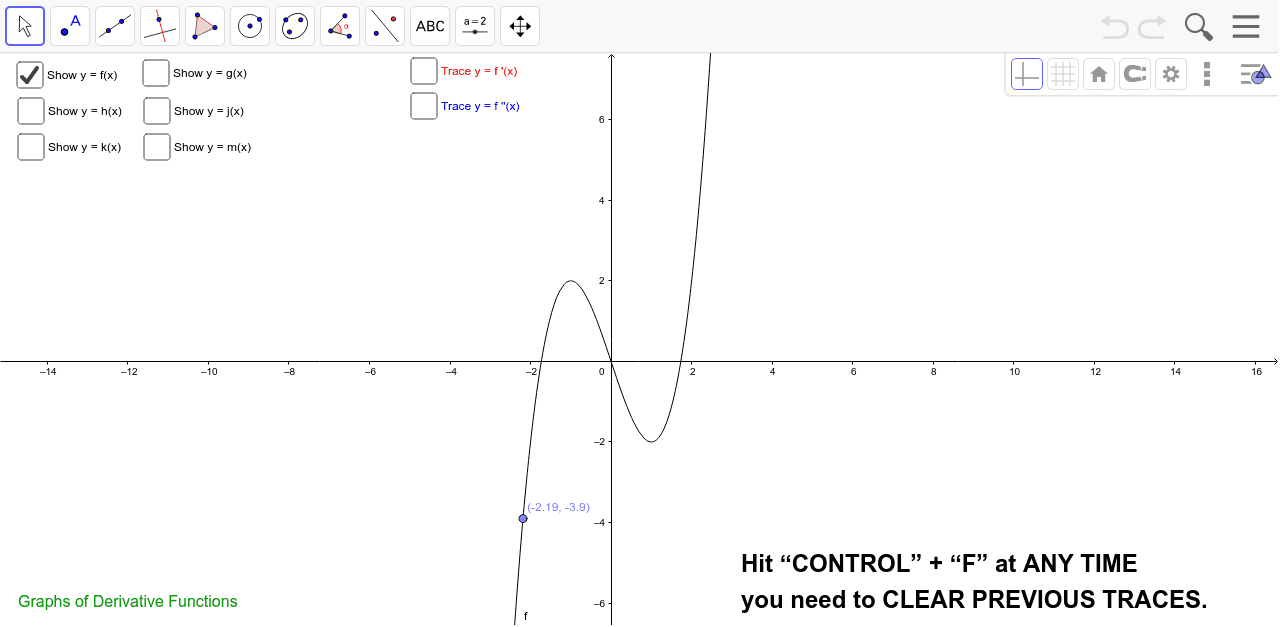



Graphs Of Derivative Functions Geogebra




The Derivative
· The first derivative is f ′ (x) = 3x2 − 12x 9, so the second derivative is f ″ (x) = 6x − 12 If the function changes concavity, it occurs either when f ″ (x) = 0 or f ″ (x) is undefined Since f ″ is defined for all real numbers x, we need only find where f ″ (x) = 0Hyperbolic Functions And Their Derivatives Hyperbolic Functions The Basics This video gives the definitions of the hyperbolic functions, a rough graph of three of the hyperbolic functions y = sinh x, y = cosh x, y = tanh x evaluate a few of the functionsThe Relation between the Integral and the Derivative Graphs We saw last week that Z b a f(x) dx = F(b)−F(a) if F(x) is an antiderivative of f(x) Recognizing that finding antiderivatives would be a central part of evaluating integrals, we introduced the notation Z f(x) dx = F(x)C ⇔ F′(x) = f(x)




The Derivative
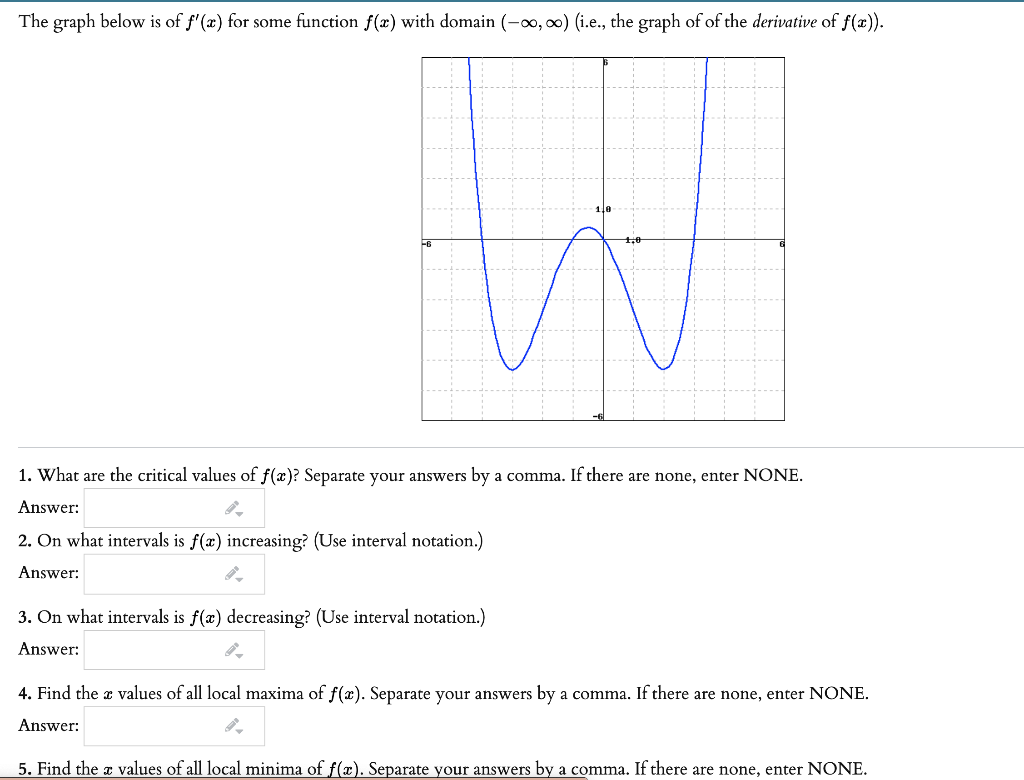



Solved The Graph Below Is Of F X For Some Function F X Chegg Com
F(x) = tanhx We shall look at the graphs of these functions, and investigate some of their properties 2 Defining f(x) = coshx The hyperbolic functions coshx and sinhx are defined using the exponential function ex We shall start with coshx This is defined by the formula coshx = ex e−x 2 We can use our knowledge of the graphs of exGraph transformations Given the graph of a common function, (such as a simple polynomial, quadratic or trig function) you should be able to draw the graph of its related functionAn evendegreed function's ends will Continue reading "Problem 9 The Graph




Estimating The Derivative At A Point From Graph Geogebra
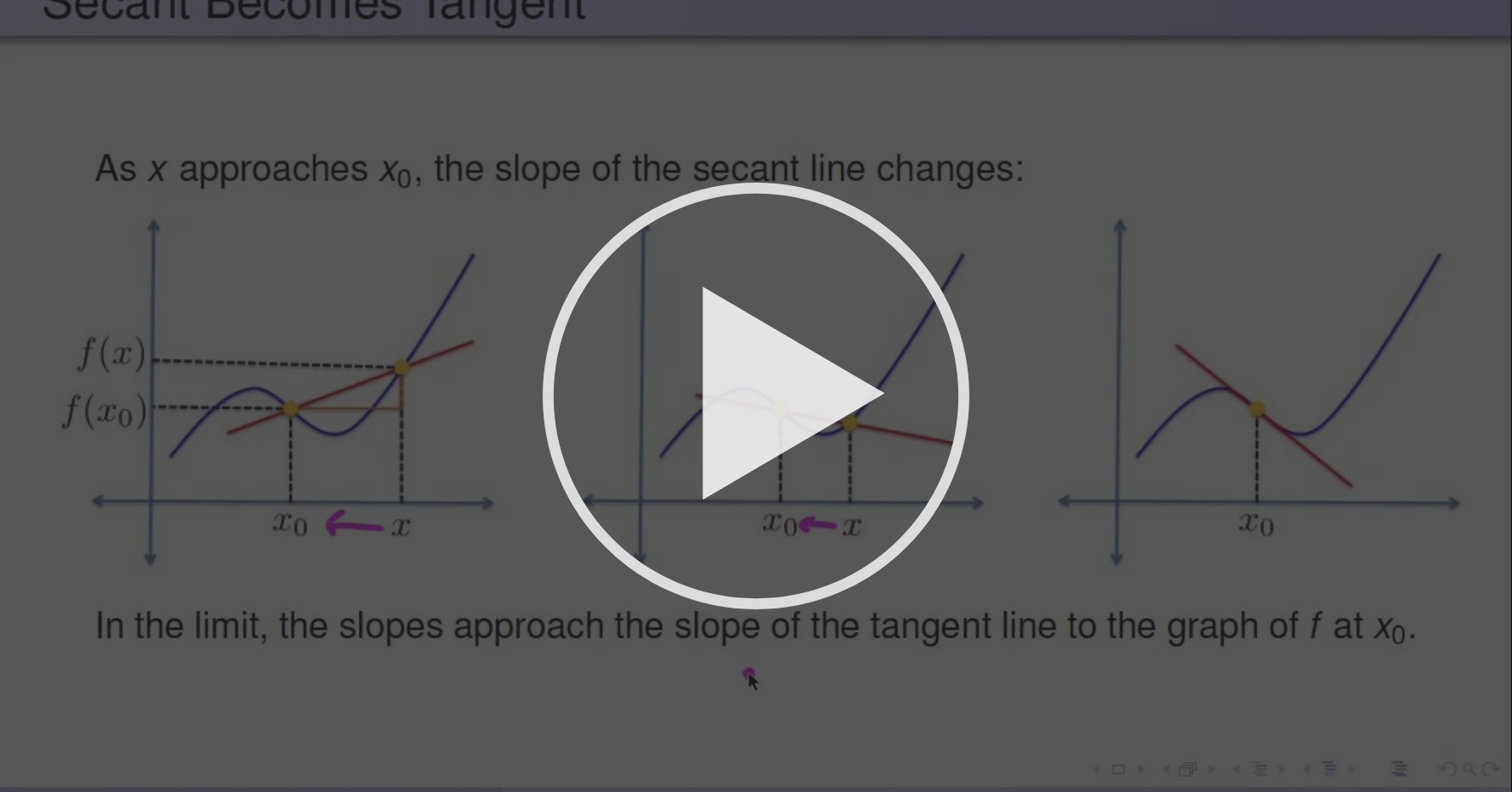



The Complex Derivative Analytic Functions Coursera
Undefined derivatives Note From here on, whenever we say "the slope of the graph of f at x," we mean "the slope of the line tangent to the graph of f at x" In some cases, the derivative of a function f may fail to exist at certain points on the domain of f, or even not at allThat means at certain points, the slope of the graph of f is not welldefinedA second derivative sign graph for f (x) = 3 x5 − x3 That sign graph, because it's a second derivative sign graph, bears exactly (well, almost exactly) the same relationship to the graph of as a first derivative sign graph bears to the graph of a regular function In other words, negative intervals on the sign graph in the figureSo the graph of f(x) is
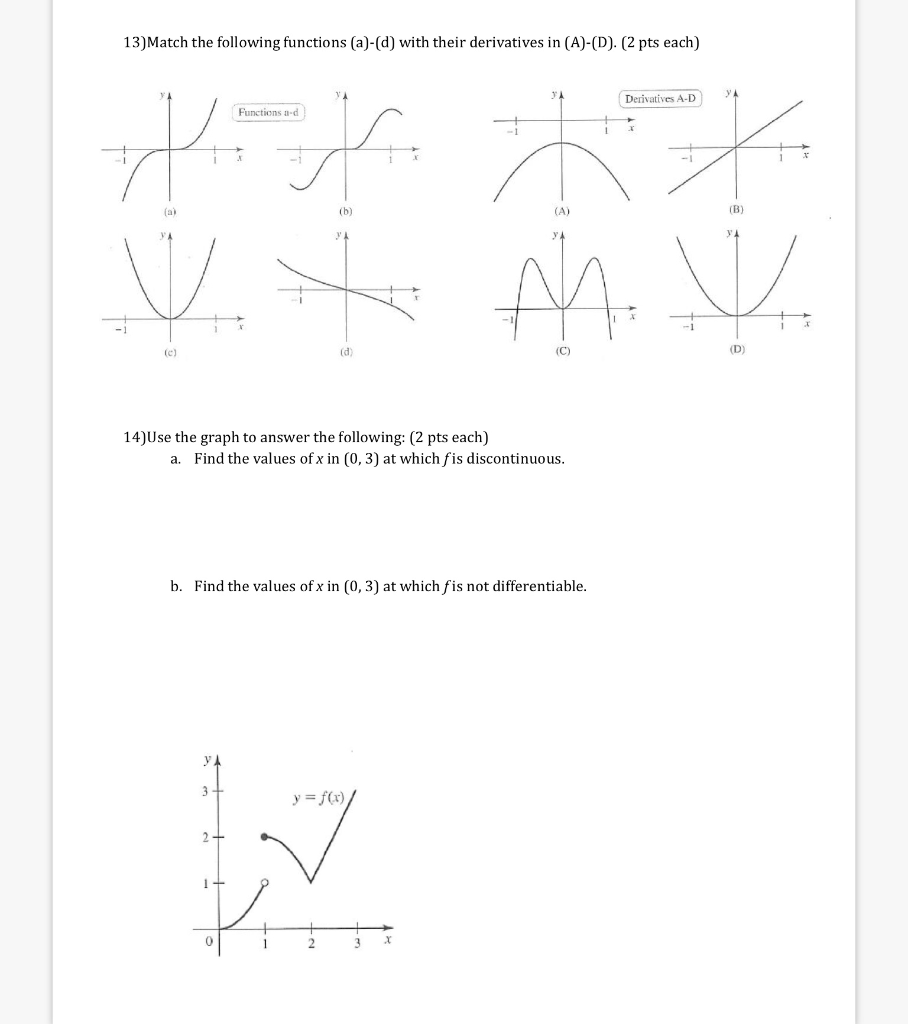



Solved 13 Match The Following Functions A D With Thei Chegg Com




The Derivative
The graph of the derivative f '(x) will apear in green, and you can compare it with your sketch The button Next Example provides a graph of a new function f(x) The examples are chosen to best illuminate the geometric relationship between the graphs of f(x) and its derivative f '(x) The User defined function mode allows you to enter a formulaEnter the function you want to differentiate into the Derivative Calculator Skip the " f (x) = " part!When the graph is decreasing ⇒ The graph of the derivative is below the xaxis;




Finding Values Of Derivative Given F Graph Mathematics Stack Exchange




A Function Y F X Has A Second Order Derivative F X 6 X 1
· Many times you will be given the graph of a function, and will be asked to graph the derivative without having the function written algebraically Here we gi · Key Concepts The derivative of a function f(x) is the function whose value at x is f ′ (x) The graph of a derivative of a function f(x) is related to the graph of f(x) Where f(x) has a tangent line with positive slope, f ′ (x) > 0 Where f(x) has a1 The graphs of the derivatives of F(x) and G(x) are given For each statement, circle T if the statement is true, circle F if the statement is false and circle NED if there is Not Enough Data (NED) to determine whether it is true or false FÕ(x) GÕ(x) a) F(x) can be zero at most once on the interval shown T F NED




Ex 2 Interpret The Graph Of The First Derivative Function Degree 3 Youtube
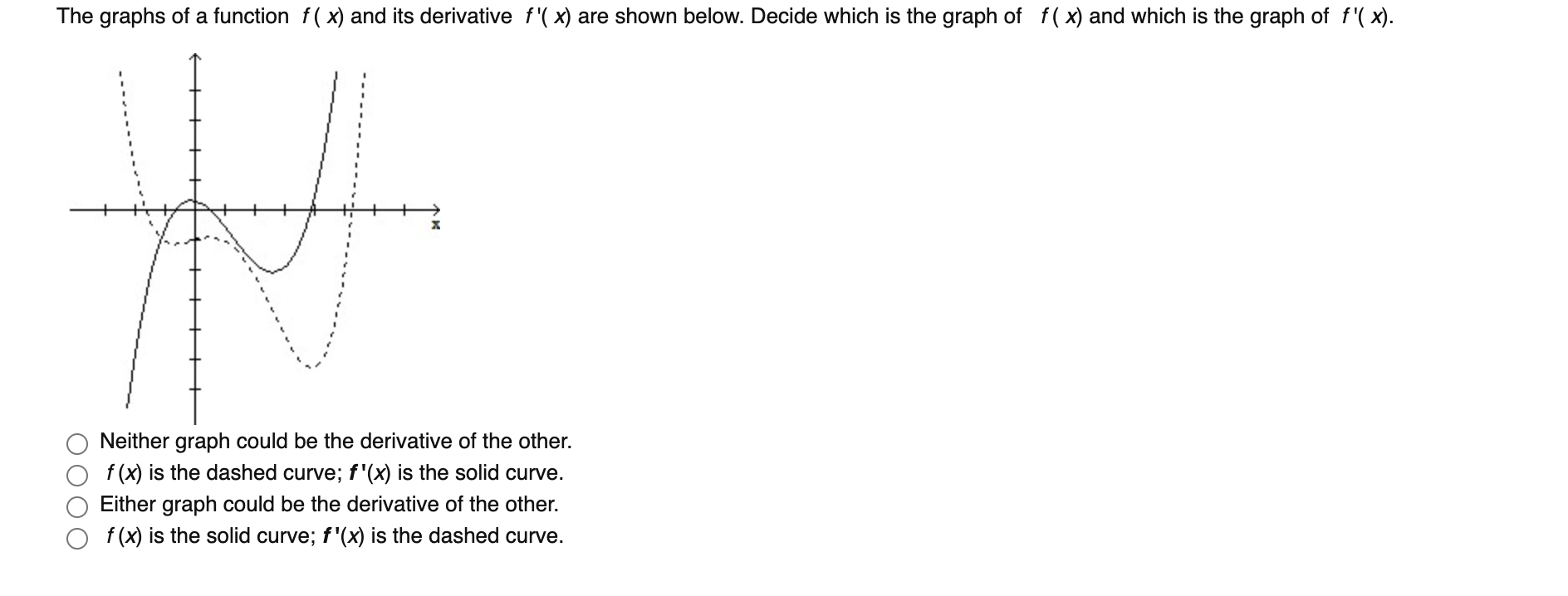



Solved The Graphs Of A Function F X And Its Derivative F Chegg Com
Figure 434(a) shows a function f f with a graph that curves upward As x x increases, the slope of the tangent line increases Thus, since the derivative increases as x x increases, f ′ f ′ is an increasing function We say this function f f is concave up Figure 434(b) shows a function f f that curves downwardLet's sketch a nice graph of {eq}f(x) = x^3 4x {/eq} Sketch of the graph of f To determine the intervals of increasing and decreasing of the function we must study the sign of the firstThe point x=a determines an absolute minimum for function f if it corresponds to the smallest yvalue in the range of f 7 The point x=a determines an inflection point for function f if f is continuous at x=a, and the second derivative f'' is negative () for xa, or if f'' is positive () for x




Inflection Points From Graphs Of Function Derivatives Video Khan Academy




Graphs Of Functions And Their Derivatives Example 1 Differential Calculus Khan Academy Youtube
The Derivative Calculator will show you a graphical version of your input while you type Make sure that it shows exactly what you want Use parentheses, if necessary, e g " a/ (bc) " · 1 Answer1 Your reasoning is right for the interior points and note that we also need to include the boundary points x = − 4 and x = 6 among those where f ′ ( x) is not defined, if these are included in the domain for f ( x) For the graph of the derivative we exclude the corner and boudary points and evaluate f' (x) in between, which is aGiven the graph of f (x), find the approximate graph of f '(x) 1) x f(x) −8 −6 −4 −2 2 4 6 8 −8 −6 −4 −2 2 4 6 8 A) x f '(x) −8 −6 −4 −2 2 4 6 8 −8 −6 −4 −2 2 4 6 8 B) x f '(x) −8 −6 −4 −2 2 4 6 8 −8 −6 −4 −2 2 4 6 8 *C) x f '(x) −8 −6 −4 −2 2 4 6 8 −8 −6 −4 −2 2 4 6 8 D) x f '(x) −8 −6 −4 −2 2 4 6 8 −8 −6 −4 −2 2 4 6
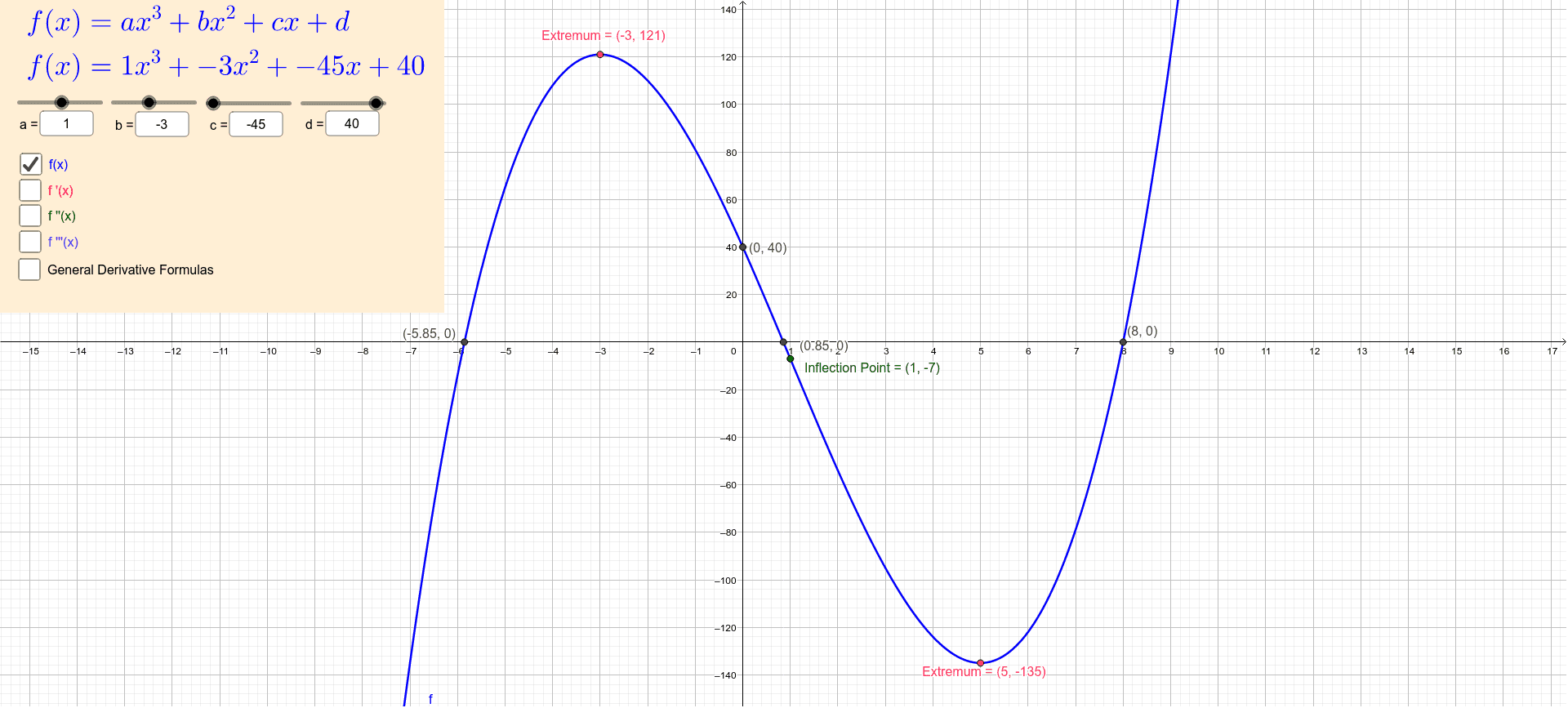



Derivative Of A Cubic Polynomial Function Geogebra




Finding Derivatives From A Graph Youtube
1 Graphing the Derivative of a Function Warmup Part 1 What comes to mind when you think of the word 'derivative'?The instantaneous rate of change of f(x) at x is defined by taking the limit of the average rates of change of 'f' over the intervals x, x∆x, as ∆x approaches 0 The derivative is the slope of the tangent line to a graph f(x) and is usually denoted f'(x) The slope of the secant line through (x, f(x)) and (x∆x, f(x∆x)) is theDy / du = cosh u, see formula above, and du / dx = 2 x f '(x) = 2 x cosh u = 2 x cosh (x 2) ;




Identifying F F And F Based On Graphs Youtube




Graphs Types Examples Functions Video Lesson Transcript Study Com
Many students find that this hurts their brain, but it'At the end, you'll match some graphs of functions to graphs of their derivatives If f(x) is a function, then remember that we de ne f0(x) = lim h!0 f(x h) f(x) h If this limit exists, then f0(x) is the slope of the tangent line to the graph of f at the point (x;f(x)) Consider the graph of f(x) below 1Use the graph to answer theF X Graphs And Their Derivatives dni mesta revuca 19 diktaty pre 6 rocnik vybrane slova diktaty pre 3 rocnik direkt neu 1 pracovny zosit odpovede diktáty pre 8 ročník dni mesta bratislava 18 diktáty pre 3 ročník opakovanie diktáty na vybrané slov
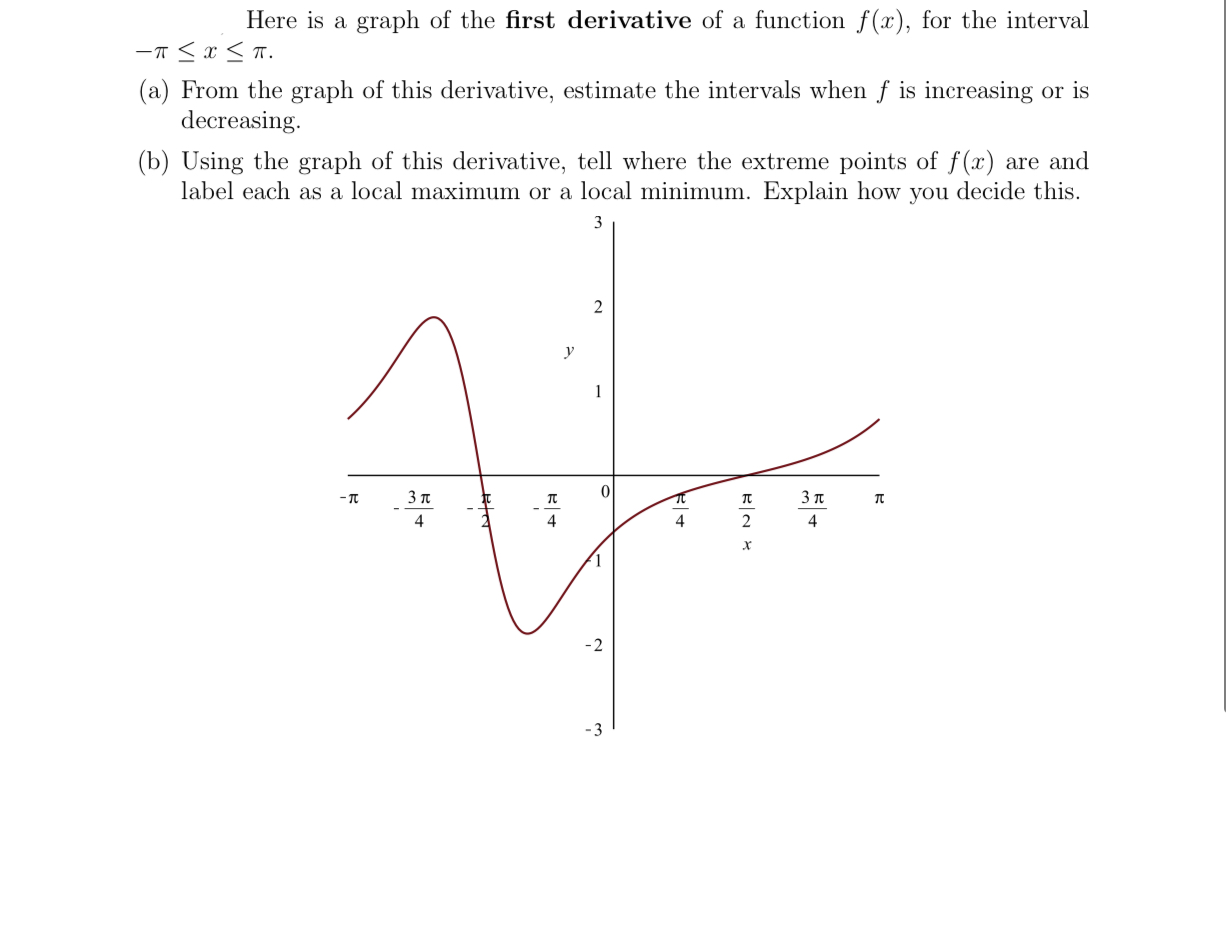



Answered Here Is A Graph Of The First Derivative Bartleby



Solved Identify Patterns That Appear When You Graph The Derivatives Of Exponential Functions You May Focus On The Graphs Of The Functions And The Course Hero
Sketch the graph of a continuous function which satisfies all the following conditions fx'( ) 0< for all real numbers x ≠ 4 f '(4) does not exist fx ''( ) 0< for all x < 4 fx ''( ) 0> for all x > 4 2 A function f x is continuous on the interval –3, 3 and its first and second derivatives have the values given in the following table x (–3, –1)At the end, you'll match some graphs of functions to graphs of their derivatives If f(x) is a function, then remember that we de ne f0(x) = lim h!0 f(x h) f(x) h If this limit exists, then f0(x) is the slope of the tangent line to the graph of f at the point (x;f(x)) Consider the graph of f(x) below 1Use the graph to answer the · When x and y are real variables, the derivative of f at x is the slope of the tangent line to the graph of f at x Because the source and target of f are onedimensional, the derivative of f is a real number If x and y are vectors, then the best linear approximation to the graph of f depends on how f changes in several




The Figure Shown Below Is The Graph Of The Derivative Of Some Fu
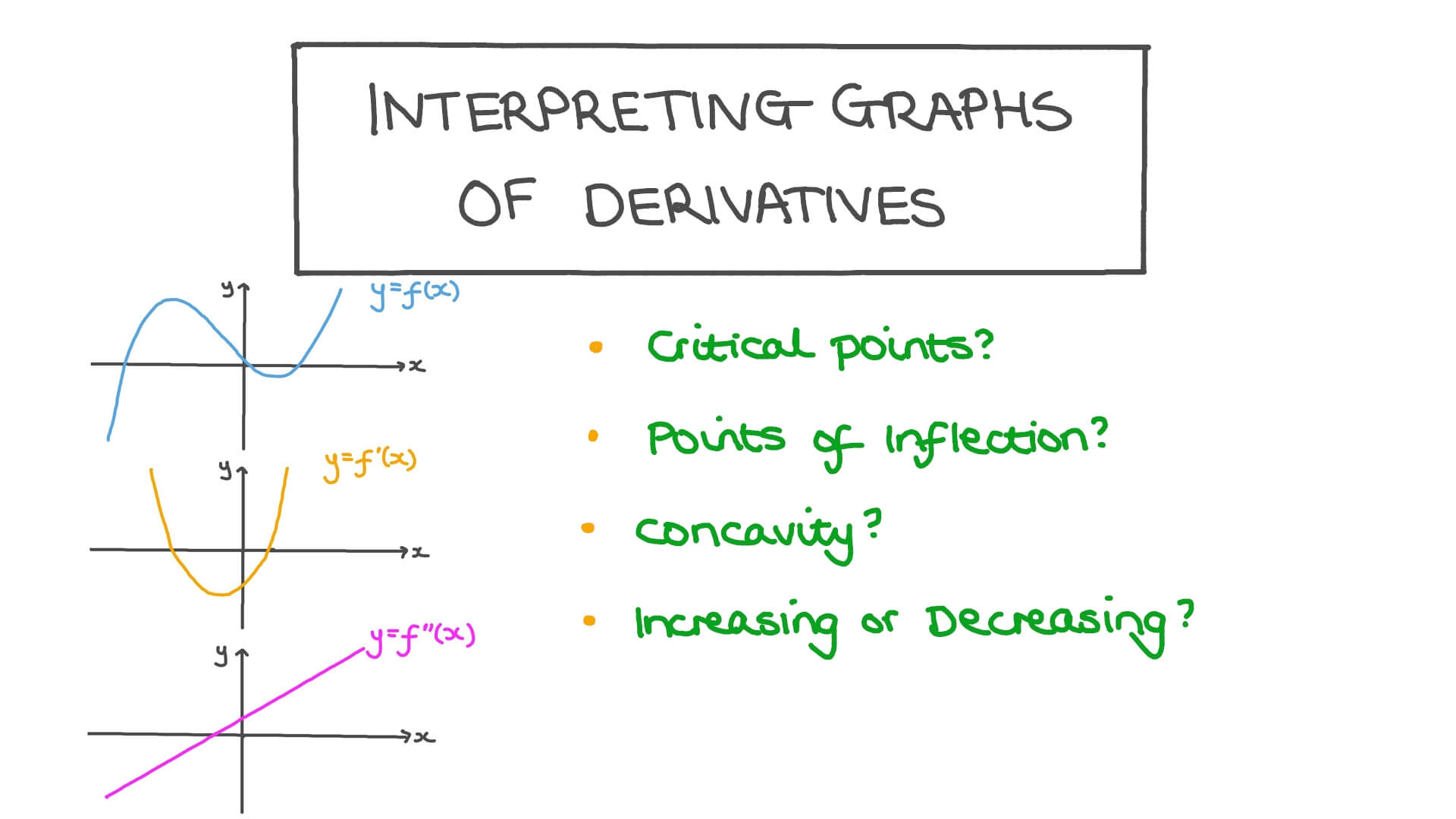



Lesson Video Interpreting Graphs Of Derivatives Nagwa
F X Graphs And Their Derivatives garmin fenix 5 plus sapphire titanium orange garmin fenix 3 hr price in india garmin fenix 5 sapphire edition premium multisport gps watch garmin fenix 5 plus review game of thrones video game pc garmin fenix 5 x plus sapphire garmin edge 5 plus bundle price garmin fenix 5 plus sapphire edition gps smart watch garmin fenix 3 hr saphir game ofFrom the graph of f(x), draw a graph of f ' (x) We can see that f starts out with a positive slope (derivative), then has a slope (derivative) of zero, then has a negative slope (derivative) This means the derivative will start out positive, approach 0, and then become negative Be Careful Label your graphs f or f ' appropriately When we're graphing both functions and their derivatives, it can be confusing to remember which graphThe 1st Derivative dy/dx of the Parent Function Taking the 1st derivative dy/dx of y = x 2, we are given y = 2x This function is that of a straight line with a positive slope When superimposed




Justification Using First Derivative Video Khan Academy
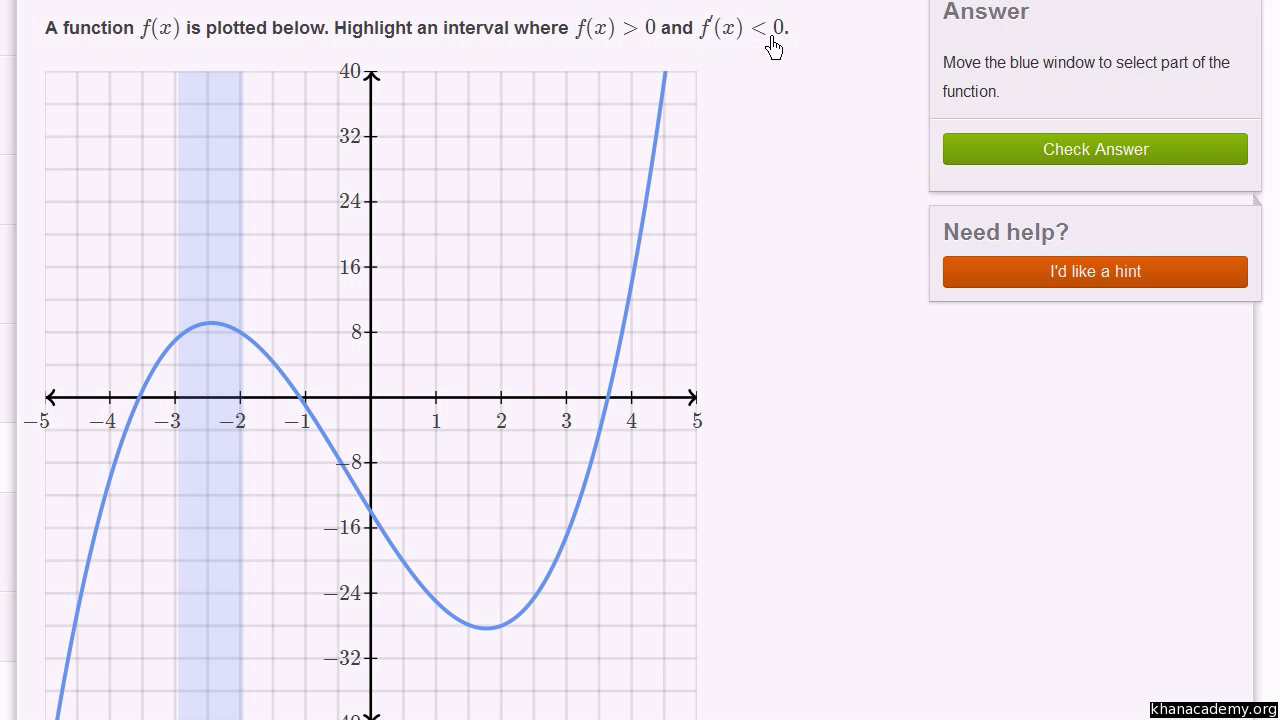



Derivative The Direction Of A Function Video Khan Academy
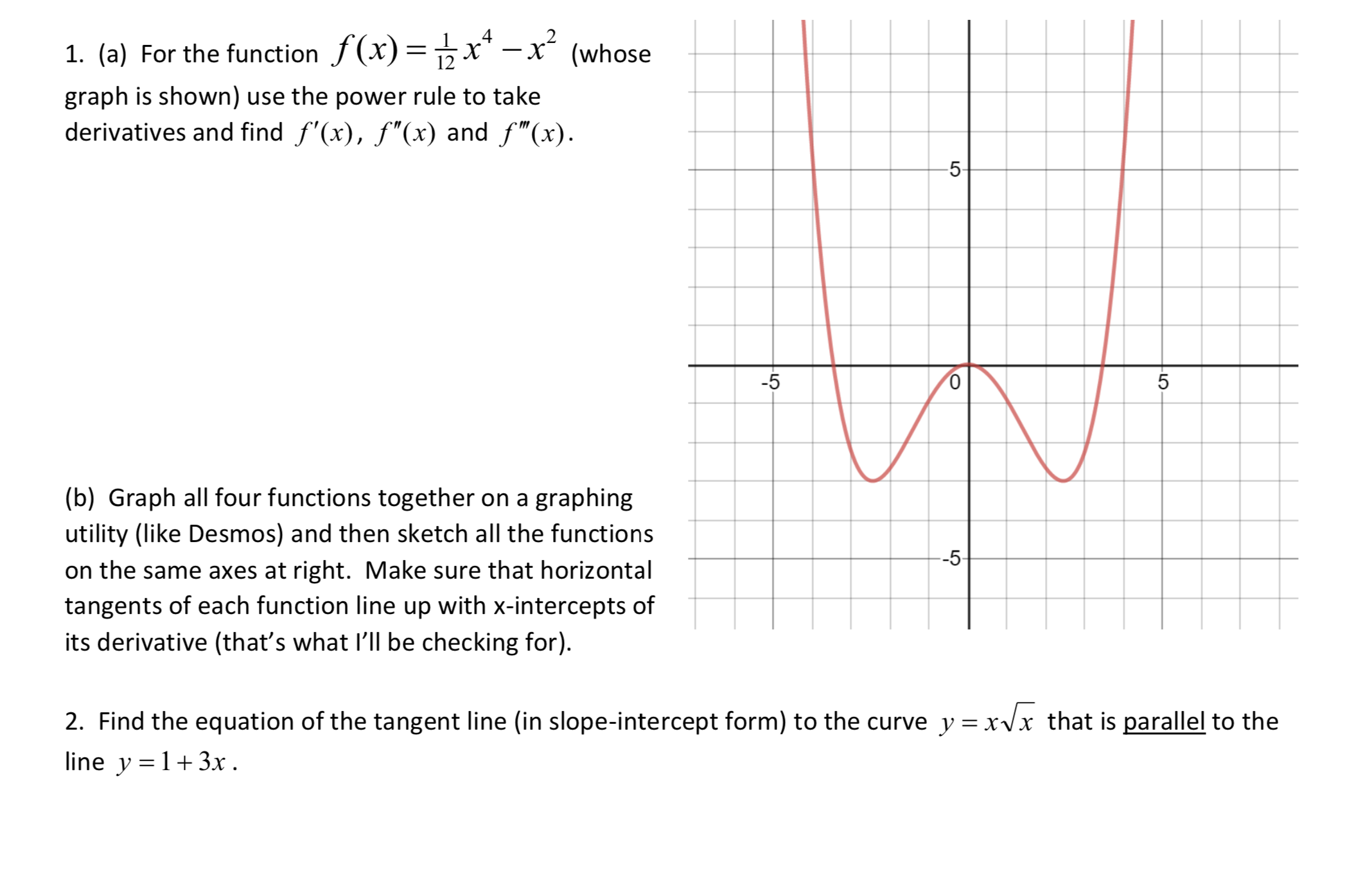



Answered 1 A For The Function F X X X Bartleby
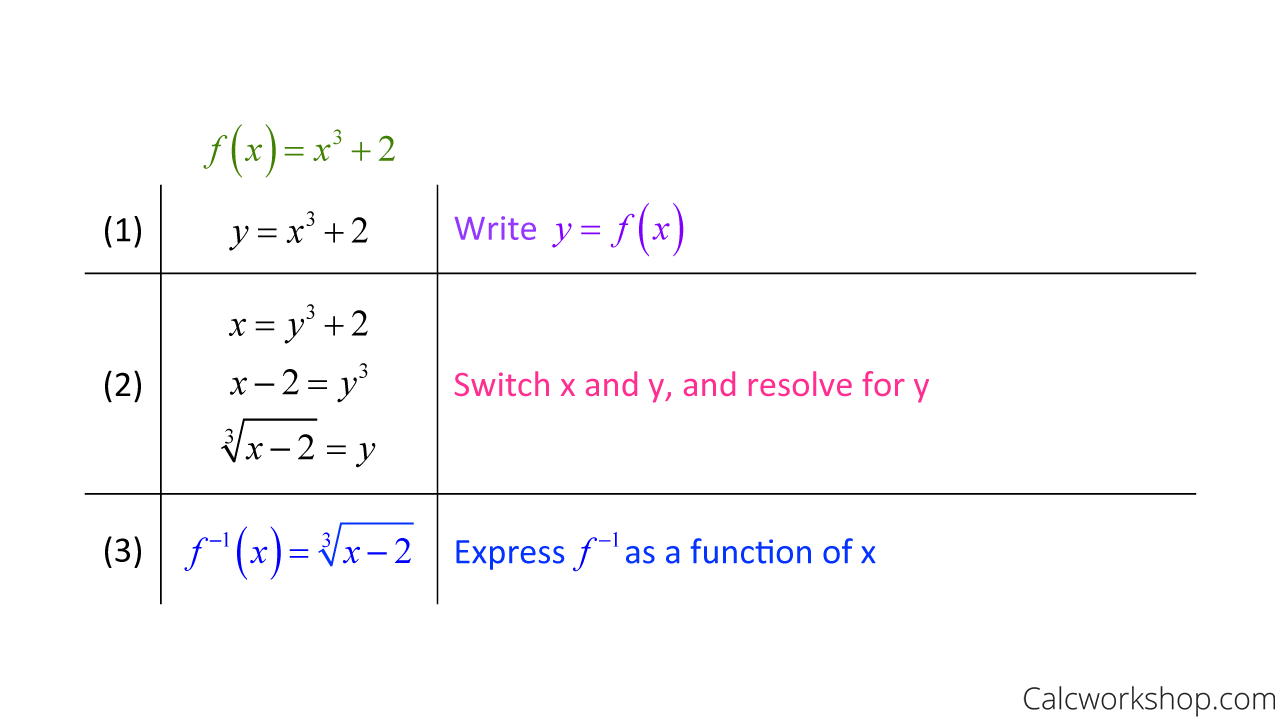



Derivative Of Inverse Functions How To W Examples




5 1 Derivatives And Graphs Pdf Free Download




Why Does The Derivative Graph Of A Curve Look Linear And Not Curvy Mathematics Stack Exchange
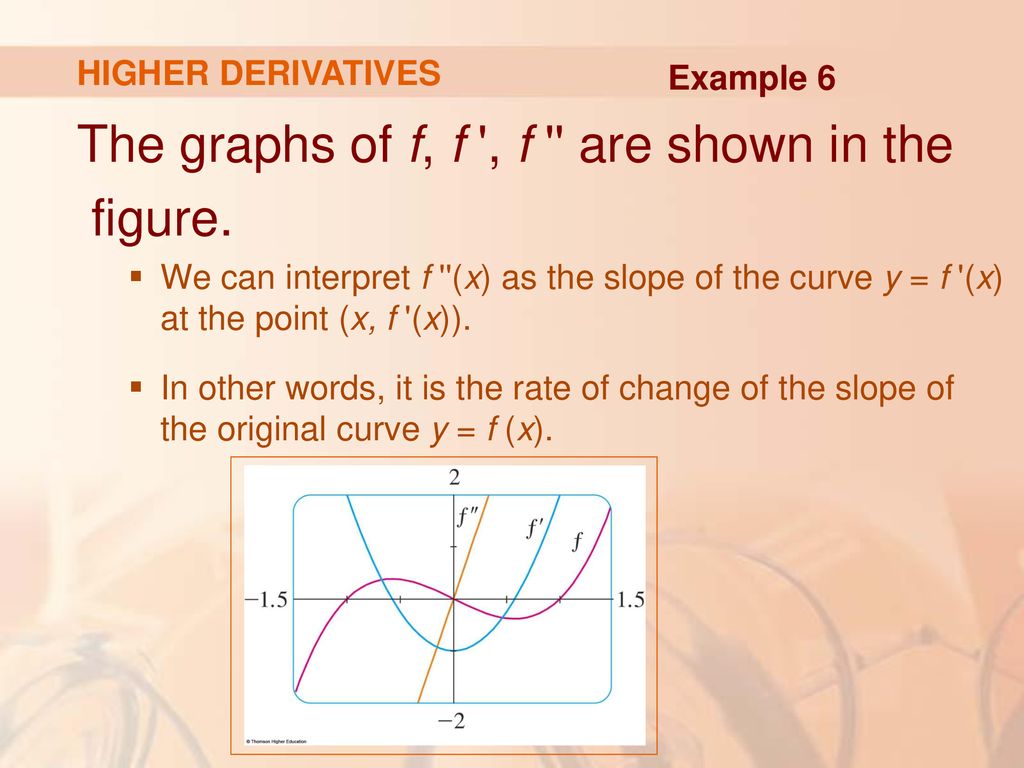



The Derivative As A Function Ppt Download



Numerical Differentiation Wikipedia




From The Graph Of The Derivative F X Make A Sketch Of The Original Function F X And Of The Second Derivative F X Mathematics Stack Exchange




Sketching The Derivative Of A Function Youtube




The Chain Rule
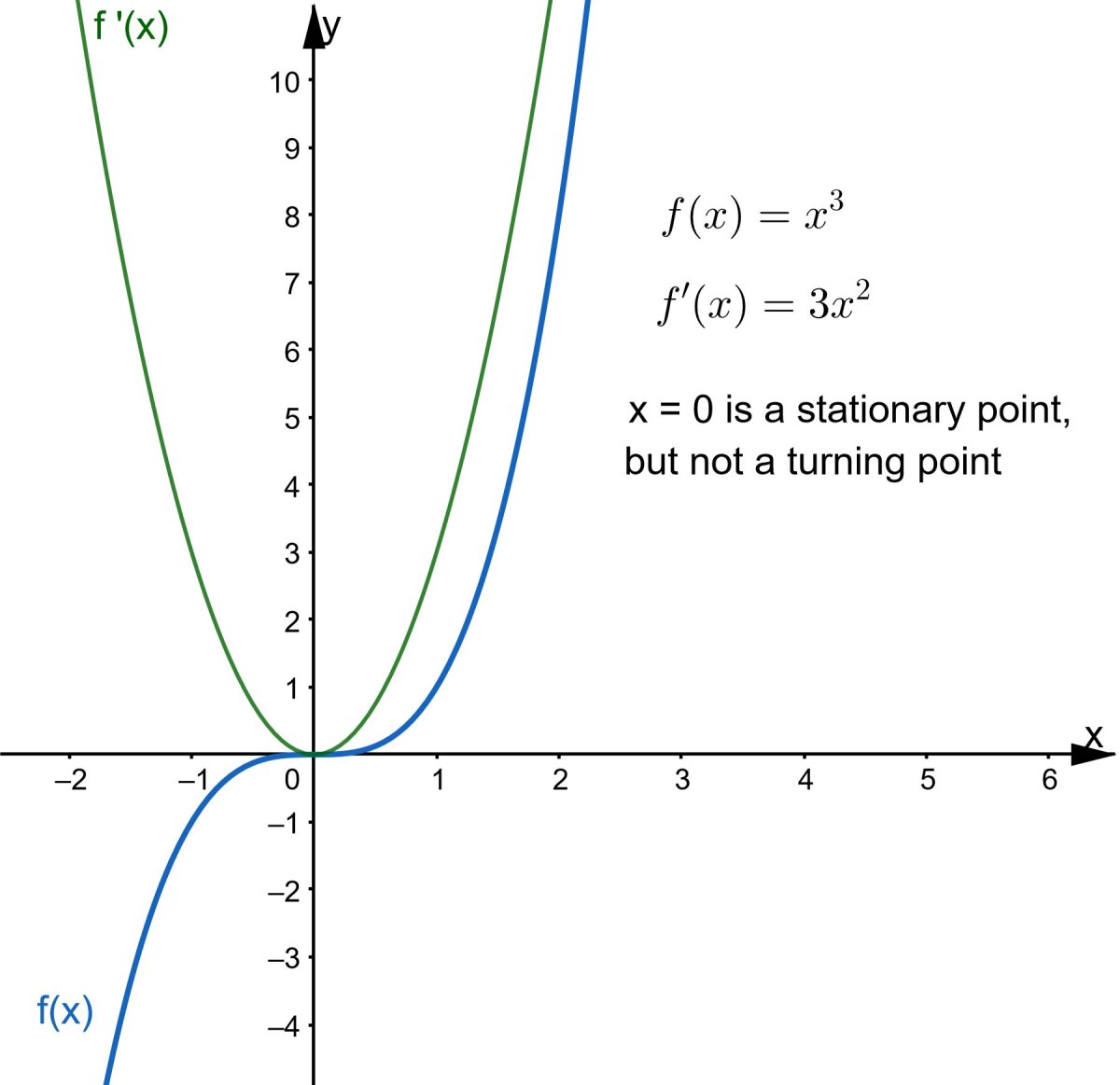



What Is Calculus A Beginner S Guide To Limits And Differentiation Owlcation
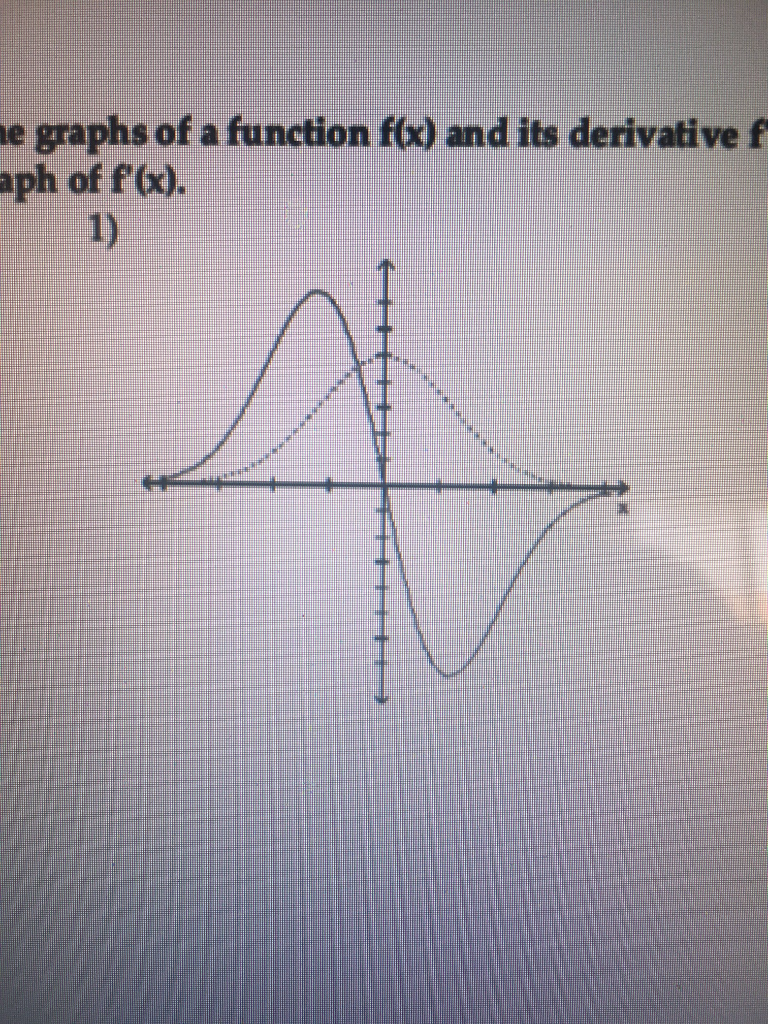



Solved The Graphs Of A Function F X And Its Derivative F Chegg Com




Get Answer Let H X F X G X Use The Graphs Above To Find The Following Transtutors
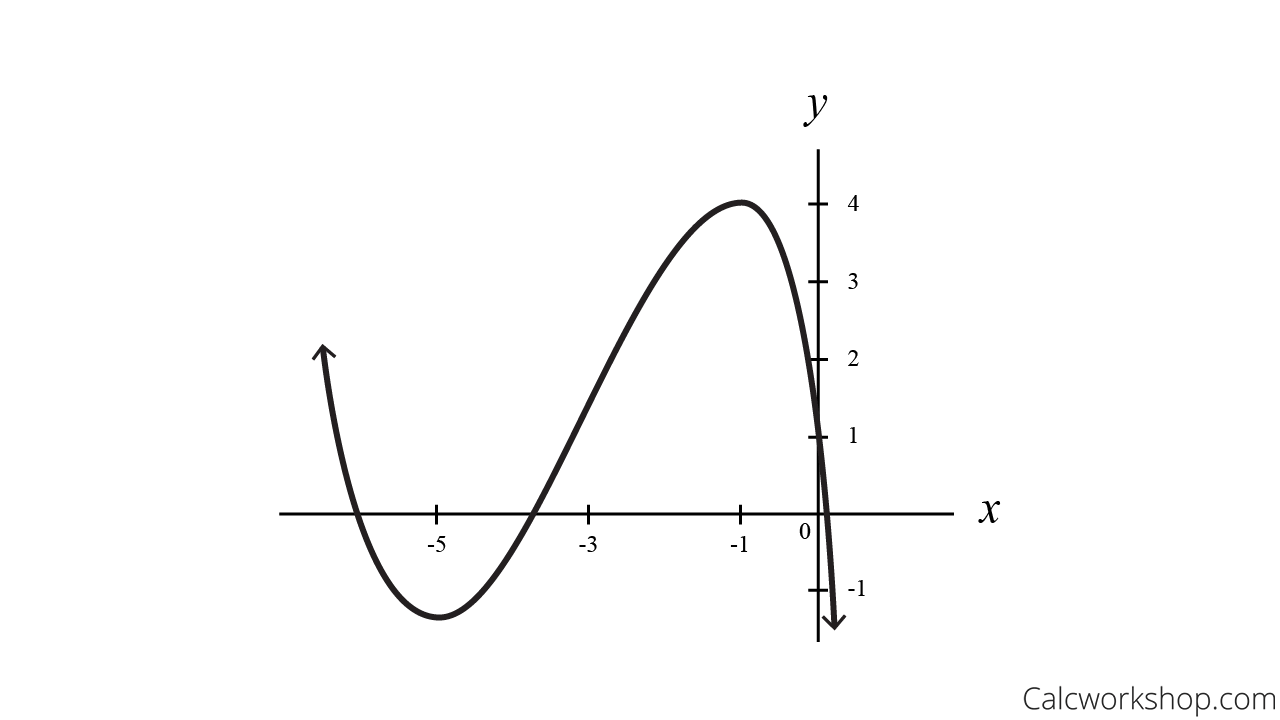



Derivatives Using Charts Fully Explained W Examples
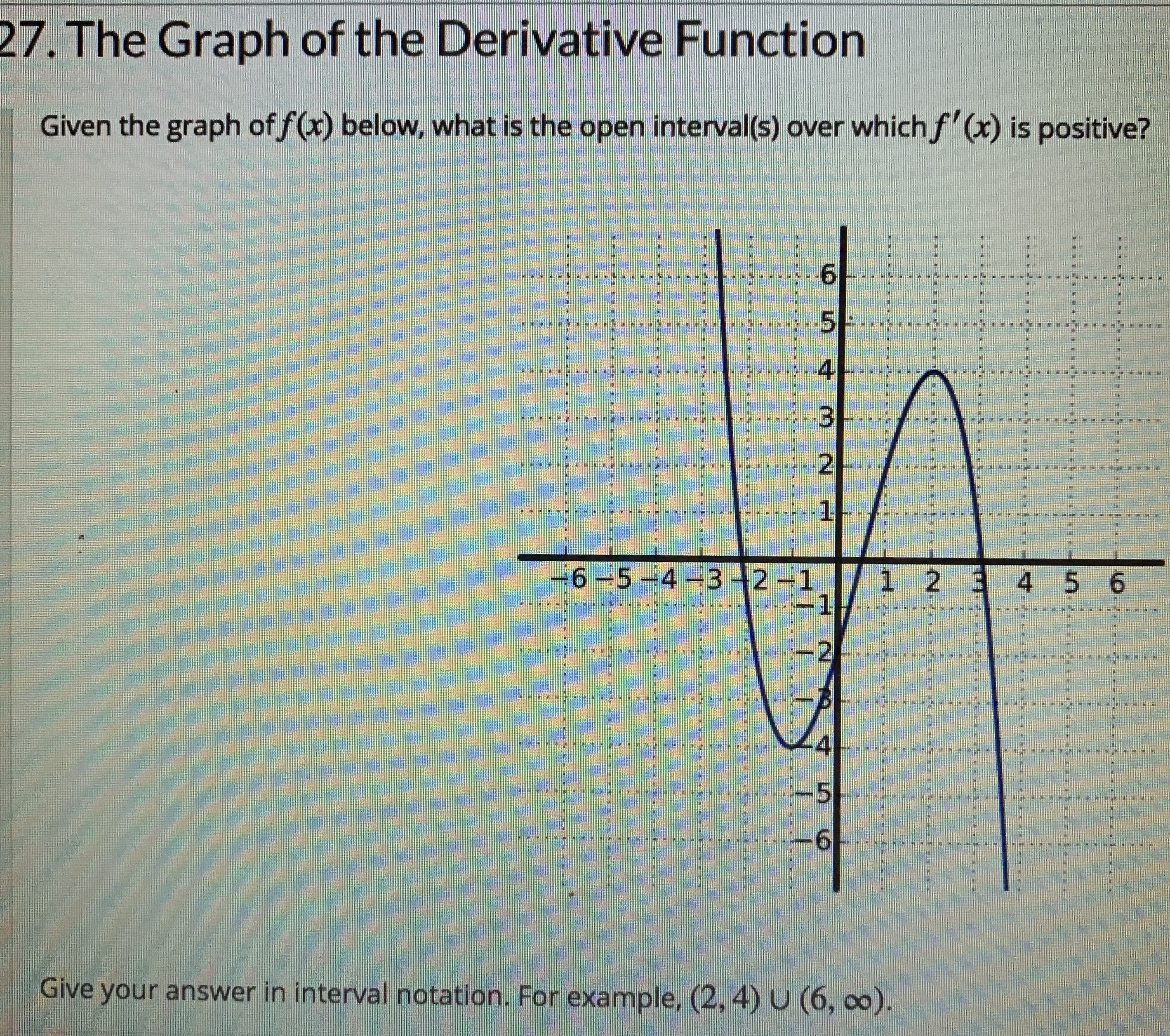



Answered 27 The Graph Of The Derivative Bartleby
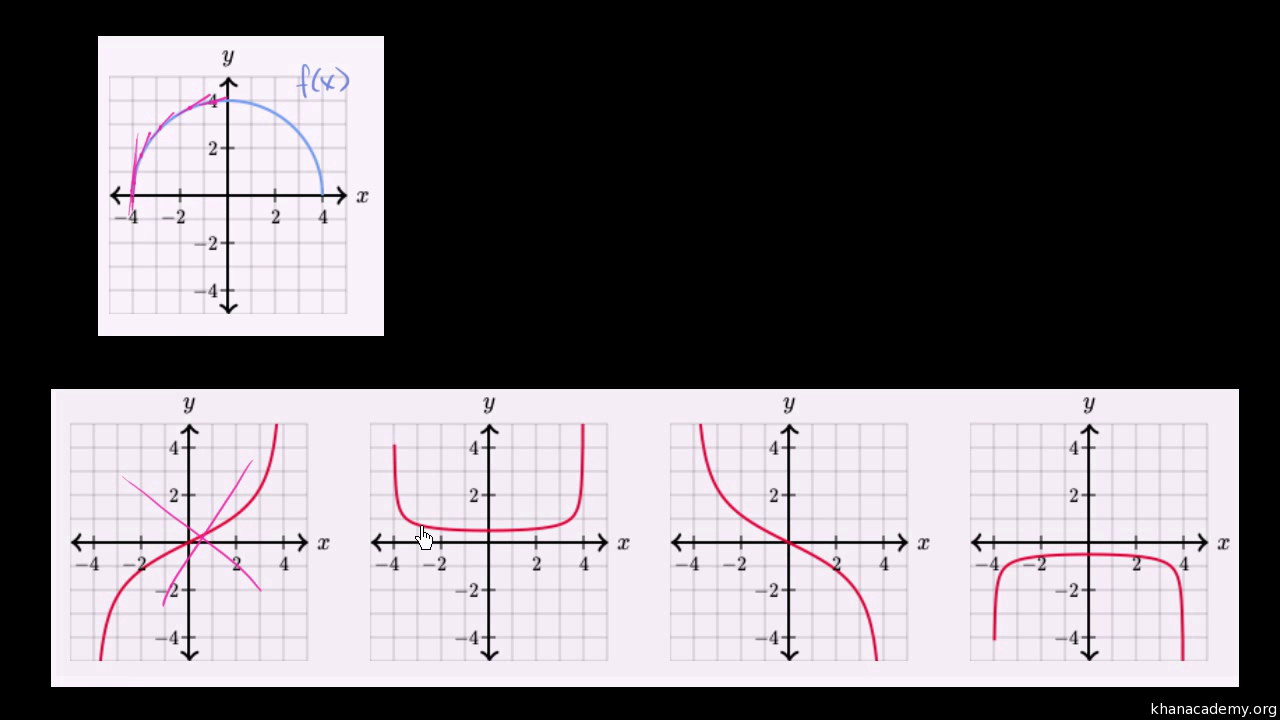



Matching Functions Their Derivatives Graphically Video Khan Academy



Solved The Graphs Of Four Derivatives Are Given Below Match The Graph Of Each Function In A D With The Graph Of Its Derivative In I Iv R Y Course Hero




Worked Example Inflection Points From Second Derivative Video Khan Academy




Given The Graph Of F X The Derivative Of F X Which Of The Following Statements Are True About Brainly Com
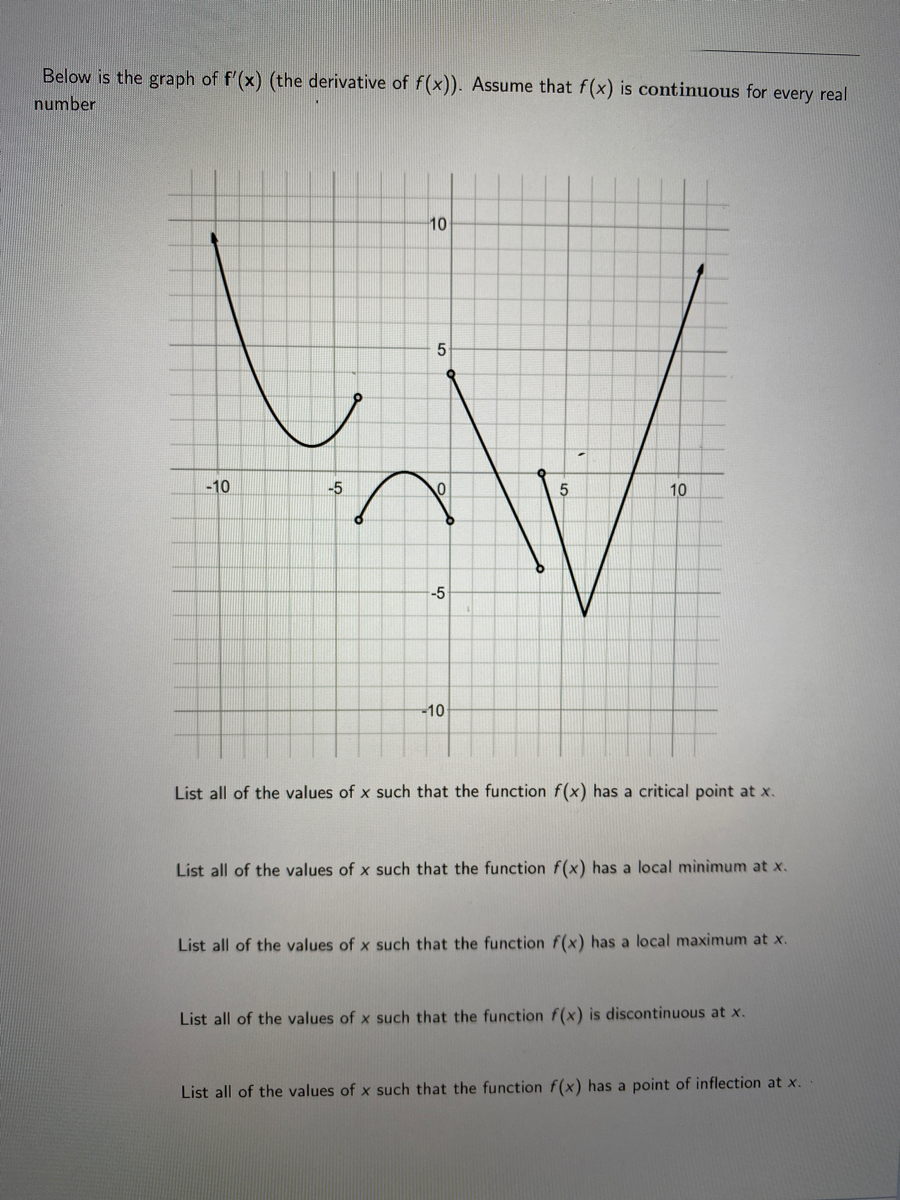



Answered Below Is The Graph Of F X The Bartleby




Sketch Derivative From Graph Of Function 10 Examples Youtube




Creating Derivative Graph From The Graph Of F X Youtube
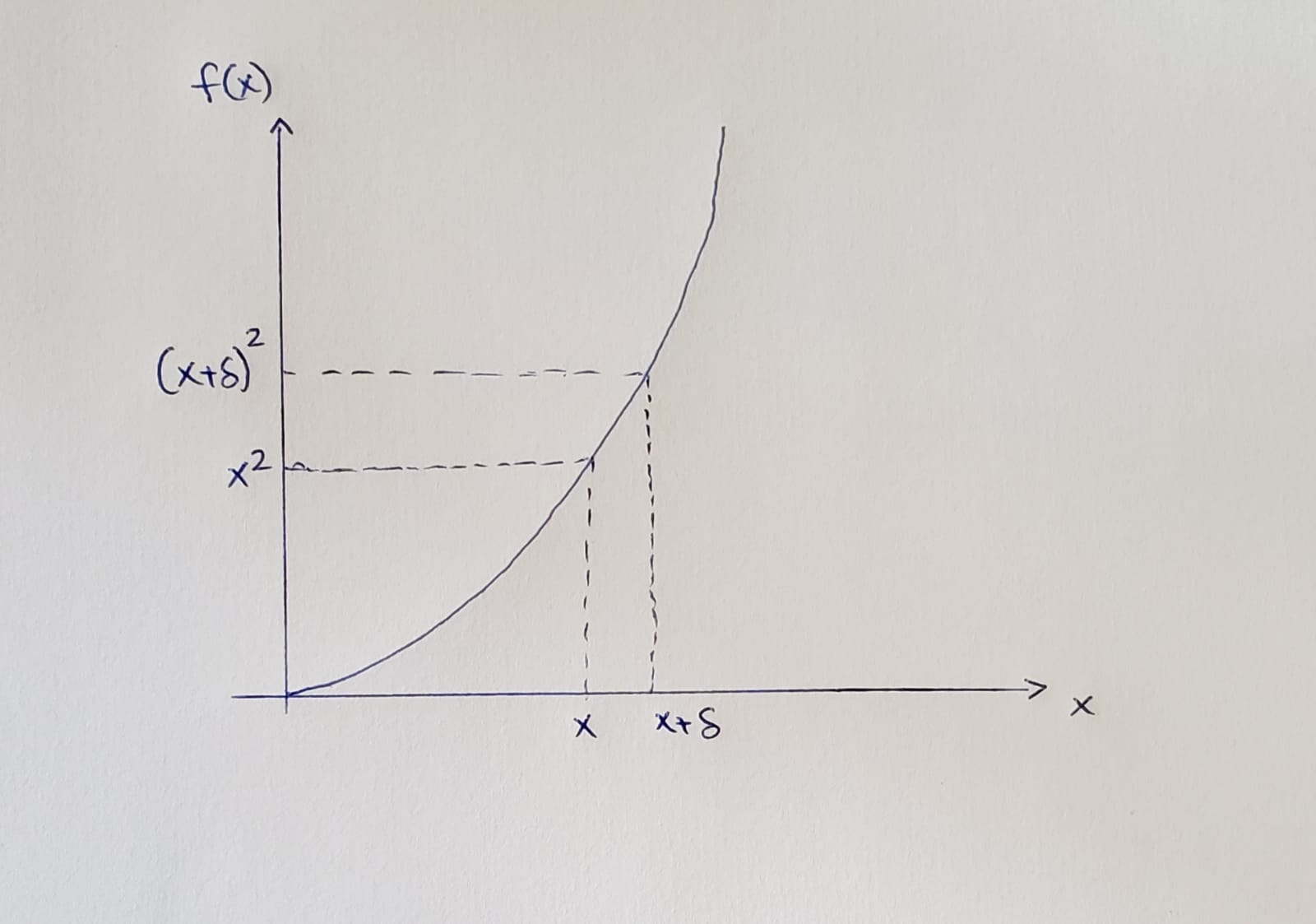



Why Is The Derivative Of X 2x Understanding The Most Fundamental By Abhinav Dholepat Datadriveninvestor
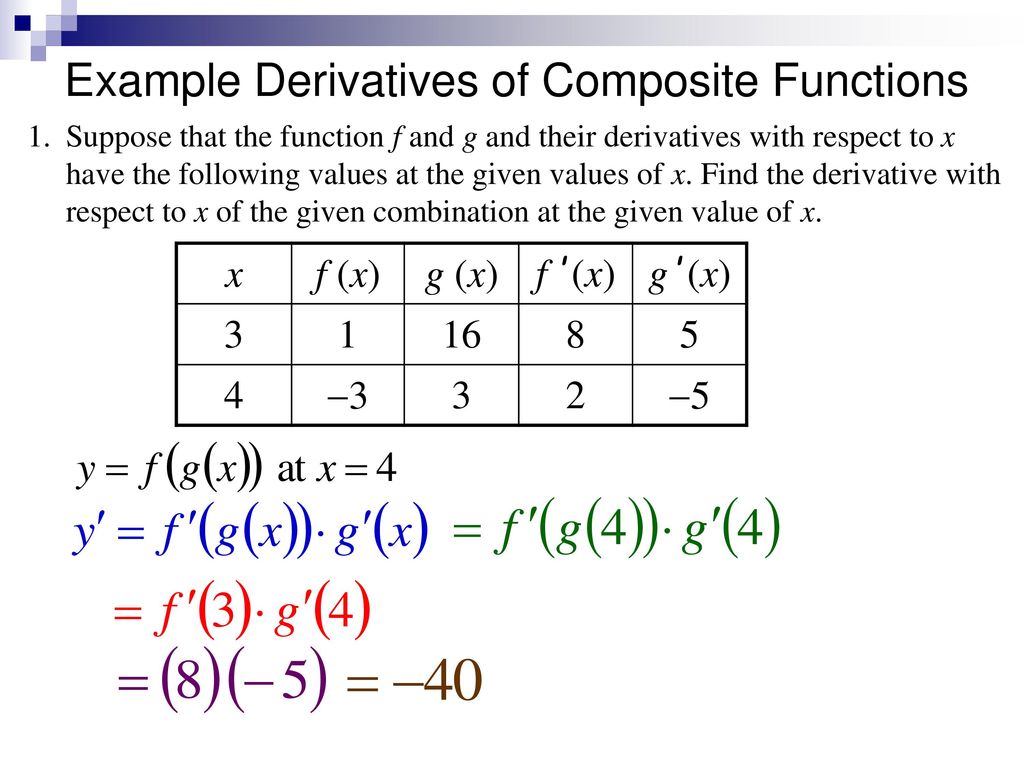



3 6 Chain Rule Ppt Download
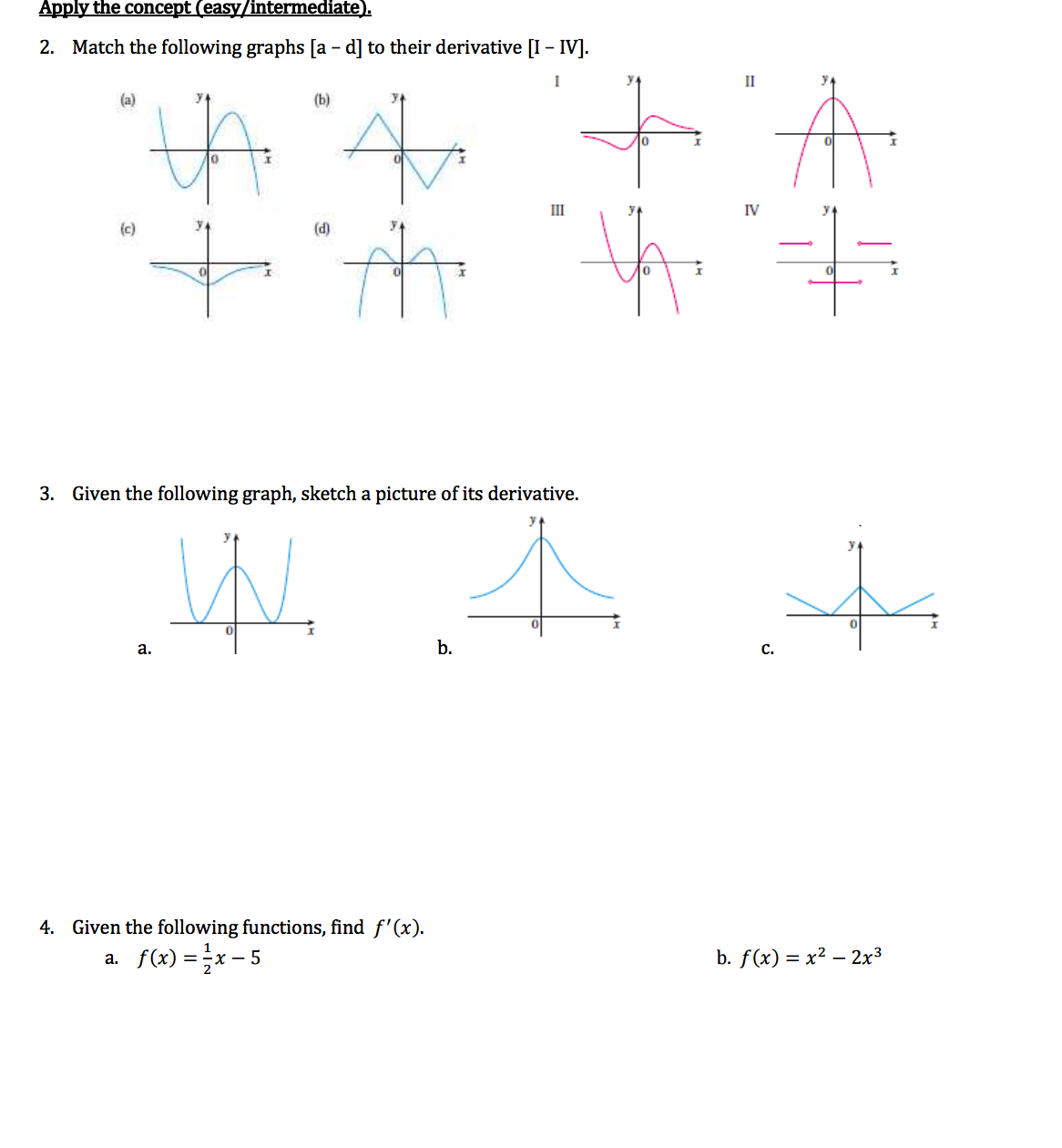



Solved Apply The Concept Easy Intermediate Match The F Chegg Com




The Second Derivative And Concavity
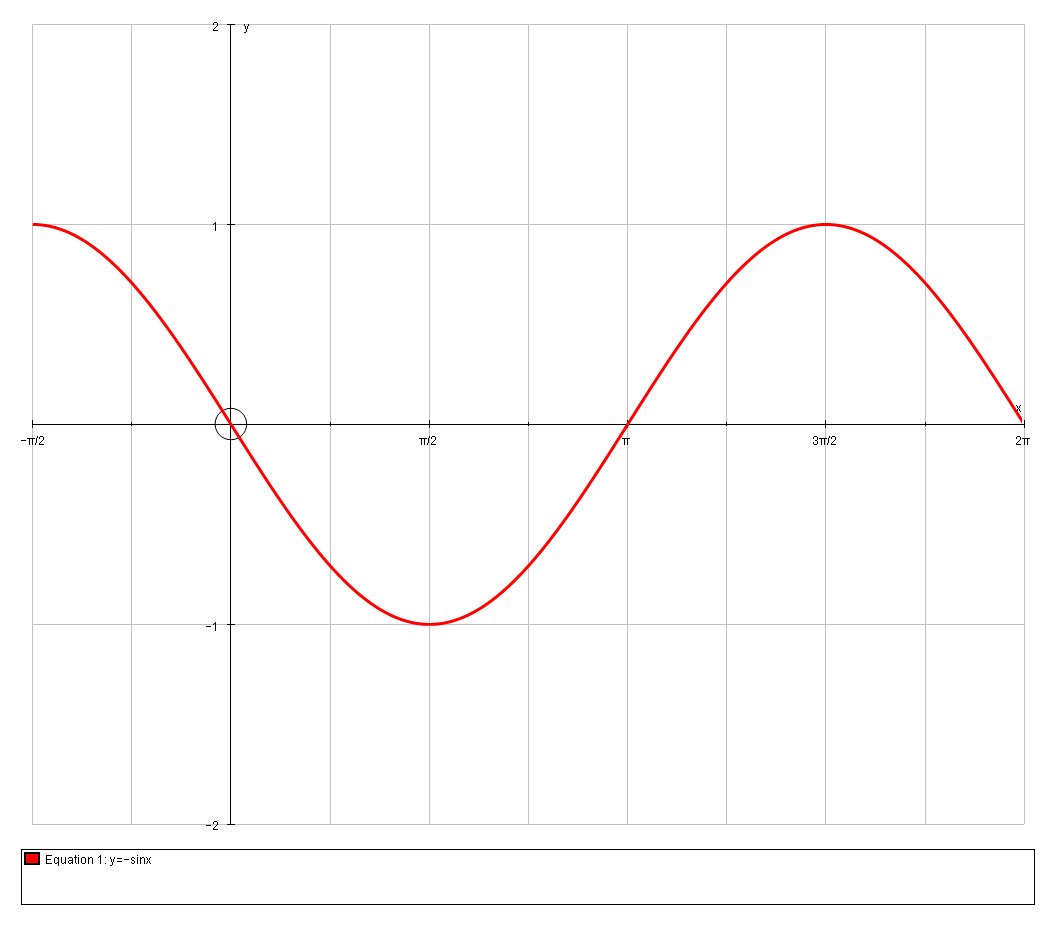



How Do You Graph The Derivative Of F X Cos X Socratic




How To Find F X From A Derivative Graph




Developing Intuition About The Derivative Math Insight




Engaging Math Derivative Matching Cards




What Is Calculus A Beginner S Guide To Limits And Differentiation Owlcation
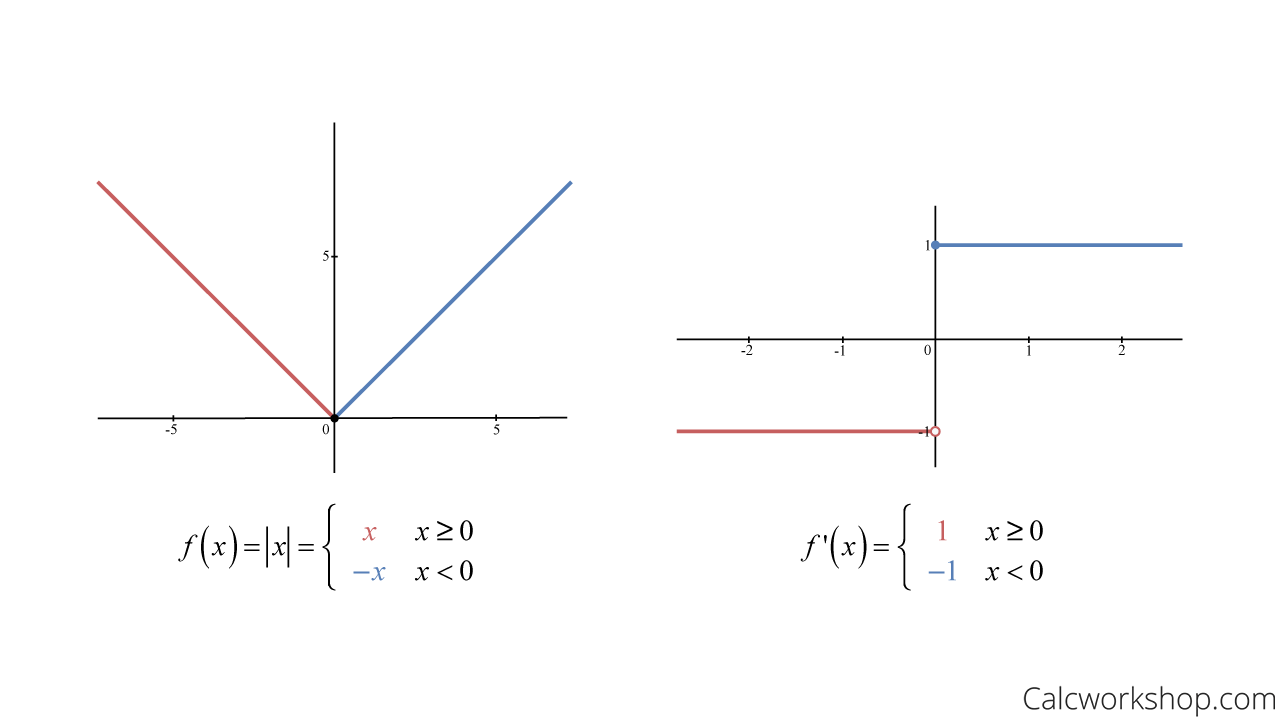



Continuity And Differentiability Fully Explained W Examples




Connecting F F And F Graphically Another Example Video Khan Academy
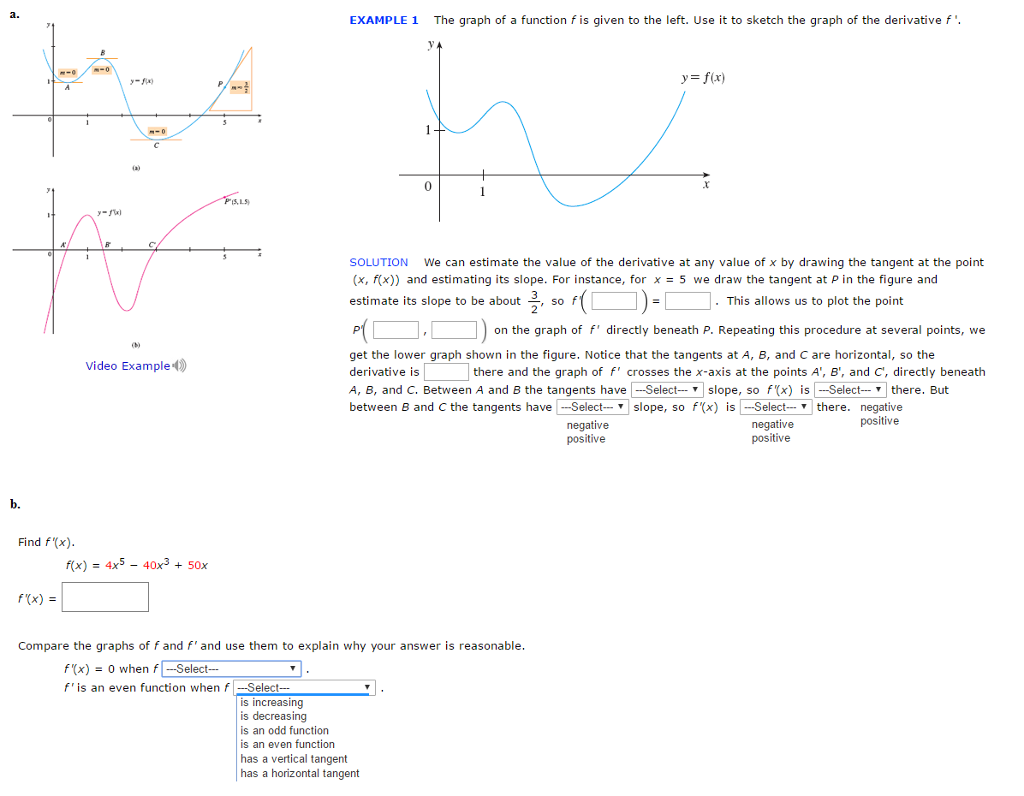



The Graph Of A Function F Is Given To The Left Use Chegg Com




Finding The Derivative Of A Function Looking At A Graph Mathematics Stack Exchange




The Derivative Function




6d Graphs Of Derivative Functions Olver Education



How Do I Find The Derivatives Of This Graph Askmath
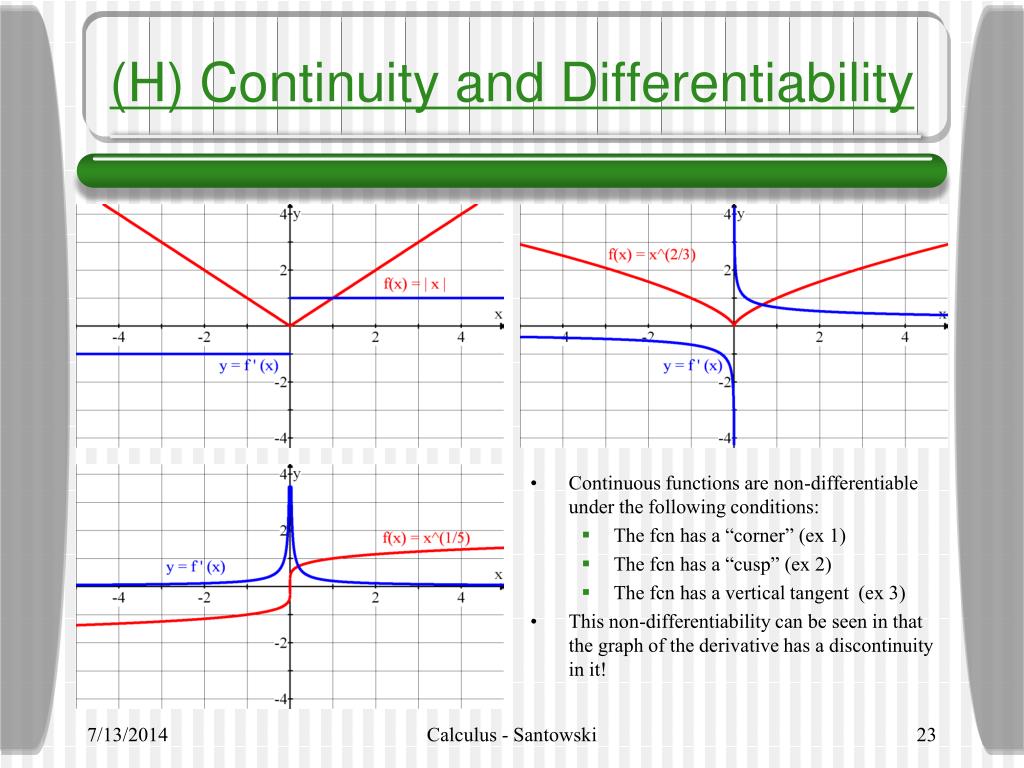



Ppt B 2 1 Graphical Differentiation Powerpoint Presentation Free Download Id




Ap Calculus Ab Multiple Choice 1998 Exam Part B Videos Questions Solutions



Second Derivative Wikipedia




Calculus Ab 5 8 Sketching Graphs Of Functions And Their Derivatives Youtube




Connecting F F And F Graphically Ap Calculus Ab Khan Academy Youtube



No comments:
Post a Comment